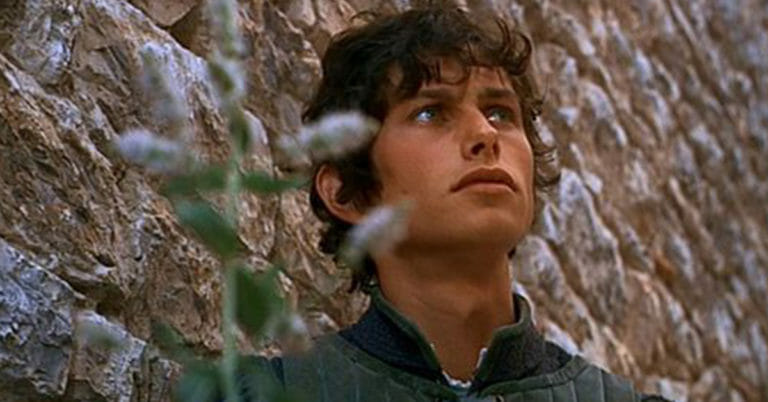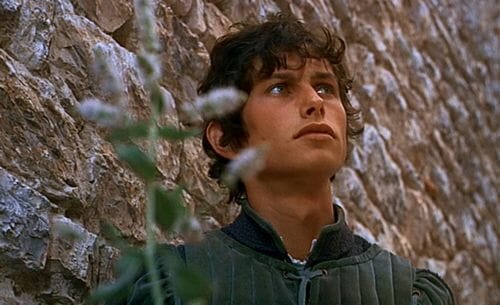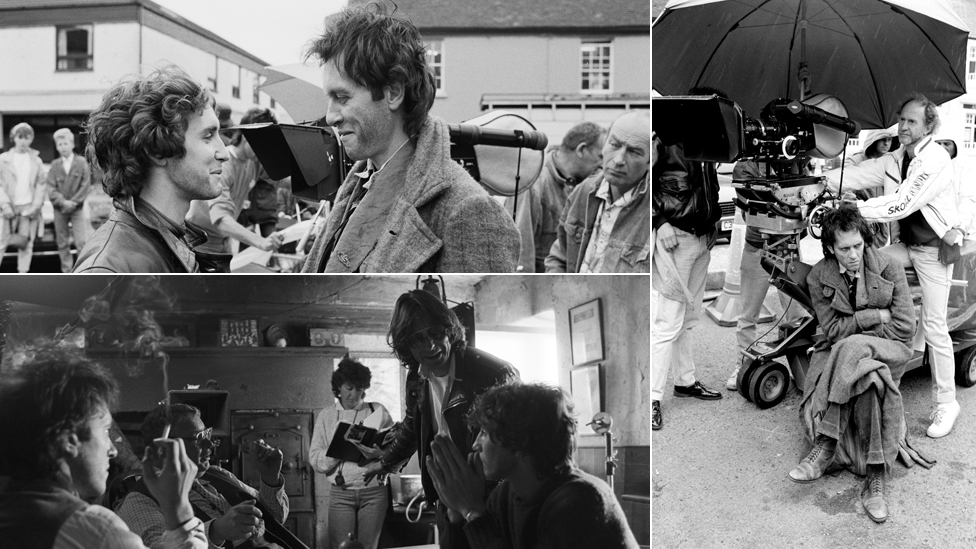By Martin Keady · May 3, 2018

I have hitherto excluded “writer-directors” from this series, as I have wanted to concentrate on “pure” screenwriters – those writers who either began their work in cinema as scriptwriters or who only ever worked in cinema as scriptwriters. However, as in so many things, Bruce Robinson is an exception. He directed his greatest screenplay, Withnail and I, in the process proving that he was at the very least a brilliant director of his own work. Nevertheless, he is predominantly a writer, as proven by his other great screenplays (especially The Killing Fields) and his other major literary works: a thinly-veiled autobiography (The Peculiar Memories of Thomas Penman); and his extraordinary attempt to establish the true identity of Jack the Ripper (They All Love Jack: Busting the Ripper). And it is because Withnail and I is arguably the greatest screenplay ever written that he absolutely demands inclusion in any list of the greatest screenwriters.
Robinson was born on 2 May 1946 in London, less than a year after the end of World War Two. Thus he was part of the remarkable generation of “post-war” children who would grow up to be the writers, artists and musicians who would transform Britain’s image of itself and its image in the rest of the world from the 1960s onwards. Indeed, a direct comparison can be made with one of those other luminaries, Pete Townshend of The Who, because, like Townshend, Robinson suffered an abusive childhood. His real father was Carl Casriel, an American lawyer with whom his mother, Mabel Robinson, had a short-lived affair during the war. His stepfather, Rob, an ex-RAF man, knew that Bruce was not his biological son and never let him forget it, subjecting him to appalling physical and psychological abuse.
However, just as Townshend was to draw on his own memories of childhood confusion and suffering to create his first great masterpiece, the rock-opera Tommy, so Robinson’s creative life was fuelled by his stepfather’s mistreatment of him. Most obviously, he wrote about it directly in The Peculiar Memories of Thomas Penman (1998), but arguably it was an influence on and even an inspiration for much of his other great writing, including Withnail. In that respect, Robinson proves the truth of Ernest Hemingway’s famous adage that to be a writer you need two things: “a built-in shit detector”; and “an unhappy childhood”.
Robinson grew up in Broadstairs, in Kent, and fittingly attended a school named after one of Britain’s and the world’s greatest writers, The Charles Dickens Secondary Modern School. Like most children, he had an extraordinarily active imagination (in part to escape from the misery of his home life) and his first creative outlet was acting. By his own admission and everyone else’s, he was a beautiful young man and that physical beauty, coupled with his keen intellect, helped him to win a place at the Central School of Speech and Drama in London. Then, almost immediately upon graduating, his good looks, even more than his acting ability, won him a part in a major film, Franco Zeffirelli’s Romeo and Juliet (1968).

I have written before about Robinson’s first experience of making a movie and the profound impact that it had upon him, both as a young man and eventually as a writer. Suffice it to say here that he found himself the subject of the unwanted attention of Zeffirelli himself. In the “#METOO” era that we are now in, when women in the film industry in particular and in the world, in general, are now finally being listened to when they tell their stories of harassment and even assault, it is perhaps also worth remembering that on occasion young men, such as Robinson on the set of Romeo and Juliet, also found themselves being too closely observed, on and off set, by those with more power than them. For Robinson, it must have been doubly galling, as he had only just escaped one abusive relationship at home before finding himself being thrust against his will into another, in his first experience of work. All of these abuses and abusers of power would ultimately find themselves crystallized into the over-large form of Uncle Monty in Withnail and I, another elderly would-be predator who attempts to prey, almost vampirically, upon the young.
Nevertheless, despite Robinson’s mixed experience of actually making the film, Zeffirelli’s Romeo and Juliet was a smash hit, the most commercially successful film of a Shakespeare play ever made up to that point. Indeed, it was not just a commercial hit, but a cultural hit, as it came to symbolize, like so much of the art of the sixties (above all, of course, its pop music), the attempts of the world’s youth to escape the dead but controlling hand of their parents. As a result, its cast, including Robinson, found themselves much in demand for other films and for most of the next decade Robinson worked mainly as a screen actor, including in such notable films as Ken Russell’s The Music Lovers (1971), a biopic of Tchaikovsky, and The Story of Adele H. (1975), Francois Truffaut’s film about the daughter of Victor Hugo, in which Robinson played the British officer with whom Adele had a disastrous affair.
However, Robinson’s acting career did not all take place on the sets of great directors such as Truffaut. Like almost all actors, there were long periods of “resting”, or rather unemployment, and even the odd foray into “adult” (i.e. pornographic) movies, such as Kleinhoff Hotel (1977), for which his face was on the poster (as one of the leads) but still very much in the background, as the main image was that of a naked woman in jackboots.
Thus it was that nearly a decade after graduating from drama school and walking almost immediately into work on Romeo and Juliet, Robinson found himself both struggling for work and struggling to maintain the boyish good looks that had been so much a part of his arsenal as an actor (especially a screen actor). And it was at this time that he found himself doing the two things that would eventually make his name: first, writing; and, secondly, descending further and further into what might be called “Withnail-World”, the demi-monde of obviously talented but seemingly unemployable actors that he would forever immortalise in Withnail and I less than a decade later.
 Robinson’s way with words (he has always been one of the great raconteurs of cinema) was perhaps what won him his first serious screenwriting job. At the behest of the great British producer David Puttnam, who had already helped make such masterpieces as Chariots of Fire (1981) and Local Hero (1983), Robinson was charged with adapting for the screen a remarkable newspaper article that ultimately became a book, The Death and Life of Dith Pran, by Sydney Schanberg. Schanberg was a Pulitzer Prize-winning journalist whose most famous work was this account of his experiences in Cambodia during the genocidal rule of Pol Pot’s Khmer Rouge (or Red Army), which was ultimately made possible by the assistance and inspiration of a Cambodian fixer-turned-journalist, Dith Pran, who was himself captured and nearly killed by Pol Pot’s goons.
Robinson’s way with words (he has always been one of the great raconteurs of cinema) was perhaps what won him his first serious screenwriting job. At the behest of the great British producer David Puttnam, who had already helped make such masterpieces as Chariots of Fire (1981) and Local Hero (1983), Robinson was charged with adapting for the screen a remarkable newspaper article that ultimately became a book, The Death and Life of Dith Pran, by Sydney Schanberg. Schanberg was a Pulitzer Prize-winning journalist whose most famous work was this account of his experiences in Cambodia during the genocidal rule of Pol Pot’s Khmer Rouge (or Red Army), which was ultimately made possible by the assistance and inspiration of a Cambodian fixer-turned-journalist, Dith Pran, who was himself captured and nearly killed by Pol Pot’s goons.
This was Robinson’s second big break, after his first break of being hired for Zeffirelli to play Benvolio in Romeo and Juliet. Schanberg’s book had been a publishing sensation and so it was almost bewildering that Puttnam hired a then-unknown writer to adapt it for the screen. And yet Puttnam, who had identified and then helped steer so many of the great British writers and directors of the 1980s, including Hugh Hudson and Bill Forsyth (the directors of Chariots of Fire and Local Hero respectively), must also have seen something in Robinson that convinced him he could write a great script. And that instinct, or hunch, was triumphantly vindicated when Robinson took what was already remarkable source material and turned it into an even more remarkable film, The Killing Fields (1984).
The Killing Fields was that rarest of things – an instant classic. Robinson’s script, obviously drawing heavily on Schanberg’s best-seller but then adding his own unique wit and ear for dialogue, was nominated for Best Adapted Screenplay. Although he ultimately lost out to Peter Shaffer, for Shaffer’s own adaptation of his play Amadeus, he still joined the lofty ranks of first-time screenwriters whose scripts are nominated for an Oscar.
The success of The Killing Fields opened almost every door for Robinson as a screenwriter, but he had obviously learned something from his failure to capitalize on his initial success as an actor in Romeo and Juliet. So, rather than working on scripts for other people, he set out to write and direct a film based on his own personal experiences of “Withnail-World”, Withnail and I.
In an early piece for The Script Lab on The Greatest Screenplays Ever Written, I argued that only Casablanca matches, and perhaps even tops, the sheer “memorability” of Withnail and I, in that every single line of the screenplay is memorable. Robinson had obviously lived that life before writing about it and so wrote about it with devastating honesty and unflinching authenticity. Withnail and I is one of the few perfect films ever made, in which every element of the film – including the acting, the direction by Robinson himself, and the score by David Dundas and Rick Wentworth, which also liberally used sixties classics by Hendrix and King Curtis – is flawless, and yet, like every film, it all begins with the script.
 What may have begun in the late 1980s as a student drinking game, in which young men tried to keep up with the film’s leads drink for drink while reciting lines from the film, ultimately became a truly multi-generational phenomenon, whereby sixties survivors could relive their lost youth and younger viewers could marvel at, and be appalled by, the often grey and crushing reality of life, including worklessness, in that decade for those who were outside the small “inner circle” of pop stars and filmmakers.
What may have begun in the late 1980s as a student drinking game, in which young men tried to keep up with the film’s leads drink for drink while reciting lines from the film, ultimately became a truly multi-generational phenomenon, whereby sixties survivors could relive their lost youth and younger viewers could marvel at, and be appalled by, the often grey and crushing reality of life, including worklessness, in that decade for those who were outside the small “inner circle” of pop stars and filmmakers.
For all its brilliance, Withnail and I was not – at least immediately – a hit on the scale of Romeo and Juliet or The Killing Fields. Instead, it became the very definition of a “cult” or “sleeper” hit, whereby it found a second and ultimately eternal life, first on video, then on DVD and now on streaming services around the world. Indeed, for all the splendor of its cinematography by Peter Hannan, which made the Lake District look both more beautiful and more foreboding than at any time since Wordsworth, the subtleties and sheer “quotability” of the script arguably lent themselves more to the kind of repeat viewing offered by smaller and cheaper screens. As a result, Withnail and I has itself become a kind of cinematic rite de passage, but one that must be taken and retaken at different periods of one’s life: from student-dom and the kind of insane imbibing that Withnail and I (Marwood) initially indulge in; to the reality of post-student working life, with all the impoverishment and petty humiliations that Withnail in particular rails at; through, perhaps, to middle and even late age, in the form of Uncle Monty.
All of the characterization in Withnail and I is sublime. However, Robinson’s greatest creation, even more than Withnail and Marwood, is perhaps Uncle Monty, because he starts off by portraying Uncle Monty as an obviously ridiculous figure of fun, ripe for the kind of exploitation (or at least the borrowing of his holiday cottage) that Withnail indulges in. Then, he shows him as a more sinister, even decadent, figure, capable of rape (or “burglary”, as he semi-charmingly puts it). Finally, he becomes an old man whose absence is almost mourned for the rest of the film, or at least the following morning, when Withnail mocks the note that he leaves and Marwood expresses sympathy for “the poor old bugger”. When one bears in mind the abuse that Robinson himself suffered at the hands of his own abusers or would-be abusers – his stepfather and Zeffirelli – it is truly astonishing that he ultimately makes Uncle Monty such a sympathetic, even pitiable, figure.
The Killing Fields and Withnail and I are the “twin peaks”, or the classic one-two punch, of Robinson’s screenwriting career (and most writers and directors only get to make such a classic one-two punch late in their career, never mind at the very beginning of it). It was almost inevitable, therefore, that it would go downhill from there and in cinema at least it did. That is not to say that Robinson did not write and direct other interesting, even fascinating, films, such as Fat Man and Little Boy (1989), his meticulously researched account of the Manhattan (i.e. atom-bomb making) Project. And in Smoking in Bed: Conversations with Bruce Robinson (2000), by Alistair Owen, in which Robinson regales the author with the kind of wonderful story-telling that must have so beguiled David Puttnam, Robinson continually emphasizes the importance of doing research before beginning writing. However, there is really nothing, not even The Rum Diary (2011), his return to directing after years away to film an early Hunter S. Thompson novel, that bears comparison with The Killing Fields or Withnail.
Instead, it has been in his other, often quixotic literary output that Robinson has continued to cast his spell as one of the late 20th century and early 21st century’s great story-tellers in any medium. The Peculiar Memories of Thomas Penman (1998) directly drew on his own troubled childhood (key line: “I was brought up like sick”) and is the only other creative work of his that Robinson ranks alongside Withnail. Then he took another typically leftfield turn to write another meticulously researched book (for a supposed sybarite, Robinson has a formidable work ethic), They All Love Jack: Busting the Ripper (2015), in which he convincingly claims to have revealed the true identity of the world’s first world-famous serial killer (a masonic grand organist, no less).
Now in his 70s, but still looking ridiculously good for his age, Bruce Robinson is a truly great writer in several very different fields: autobiography, or at least “fictional autobiography”; historical non-fiction; and above all screenwriting. His first two screenplays, for The Killing Fields and Withnail and I, are perhaps the finest two screenplays that anyone has ever written, and if he has never quite matched them since, well, to quote Joseph Heller on his own early masterpiece Catch-22, nobody else has either.
 Martin Keady is an award-winning scriptwriter whose work has been produced for film, television, stage and radio. His major credits include: The Final, a short film about the famous ending of the 1979 FA Cup Final, which was shown on Channel Four; Moon the Loon, a play about the legendary Who drummer, Keith Moon, which was premiered at The Edinburgh Festival; and a collection of love poetry, Shards, extracts from which have been broadcast on Radio Four.” http://theshakespeareplays.com/
Martin Keady is an award-winning scriptwriter whose work has been produced for film, television, stage and radio. His major credits include: The Final, a short film about the famous ending of the 1979 FA Cup Final, which was shown on Channel Four; Moon the Loon, a play about the legendary Who drummer, Keith Moon, which was premiered at The Edinburgh Festival; and a collection of love poetry, Shards, extracts from which have been broadcast on Radio Four.” http://theshakespeareplays.com/
For all the latest from The Script Lab, be sure to follow us on Twitter, Facebook, and Instagram.